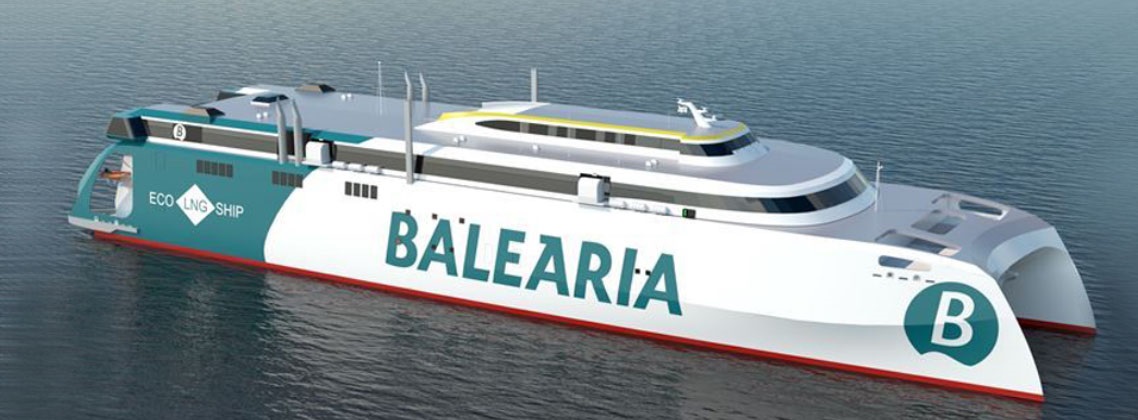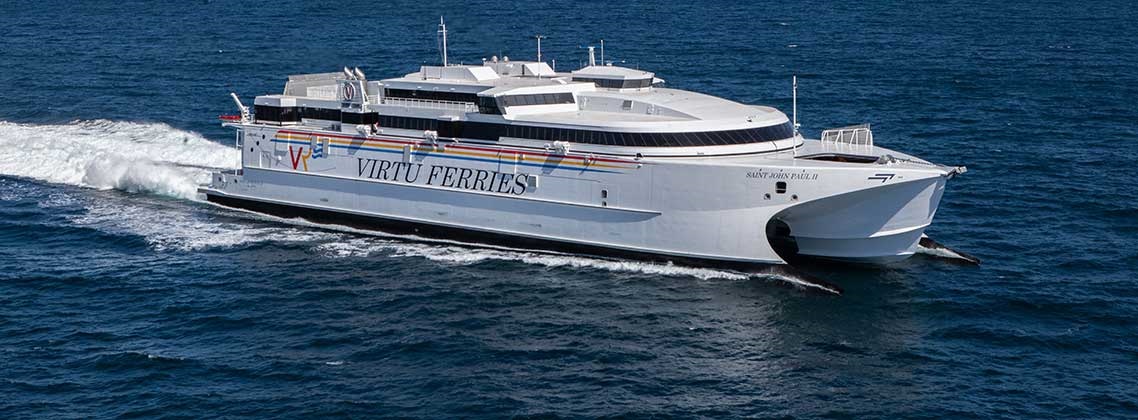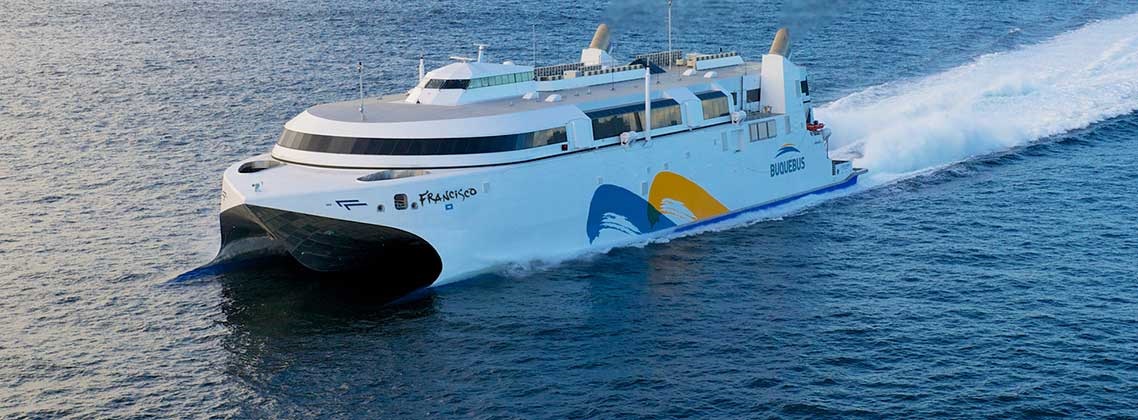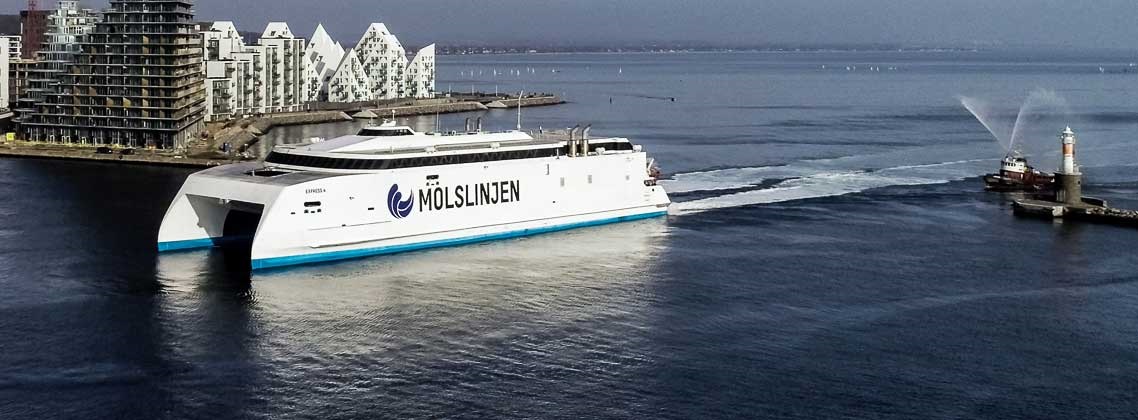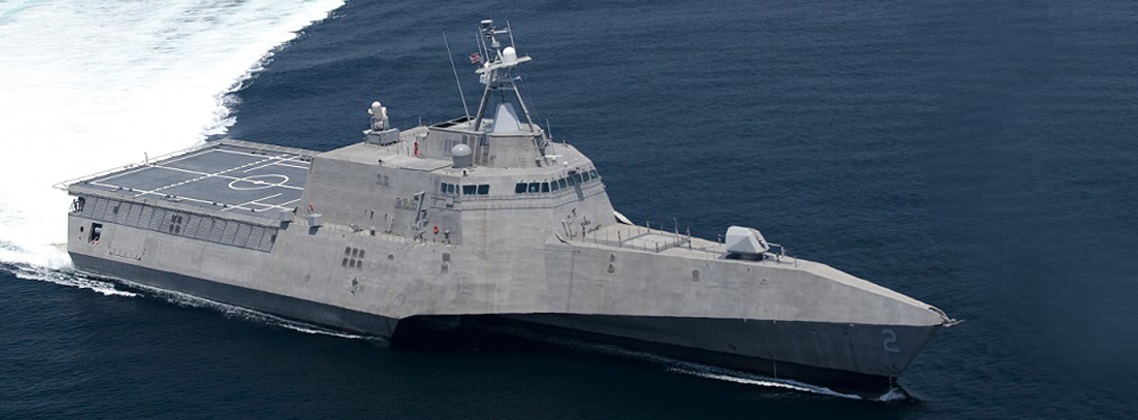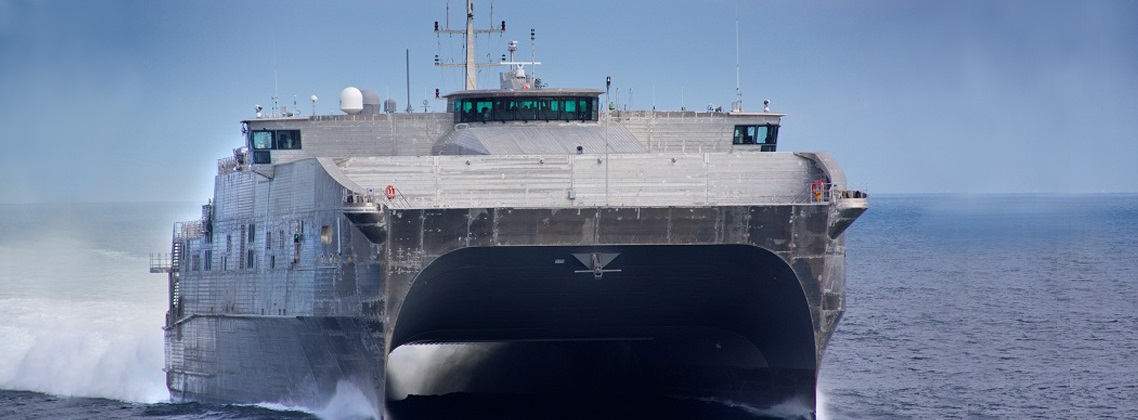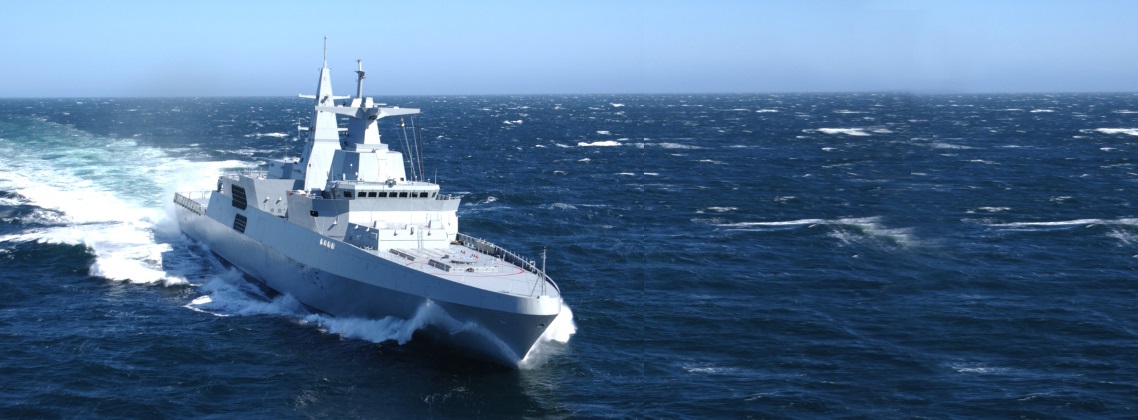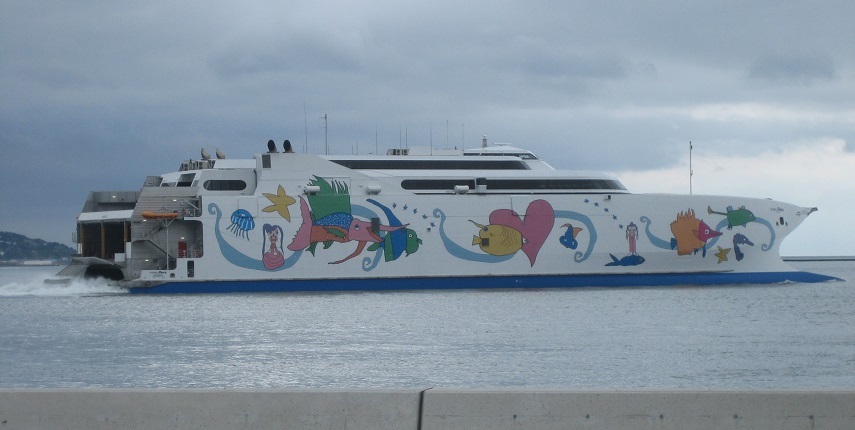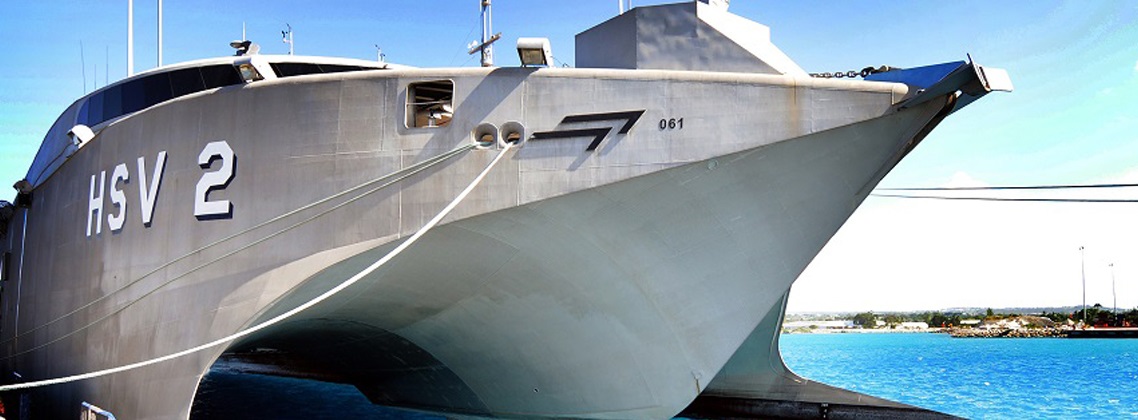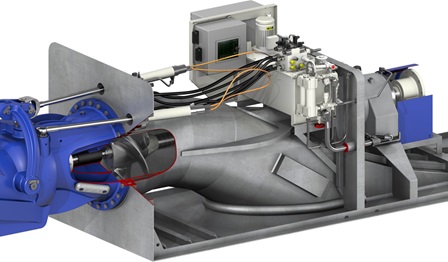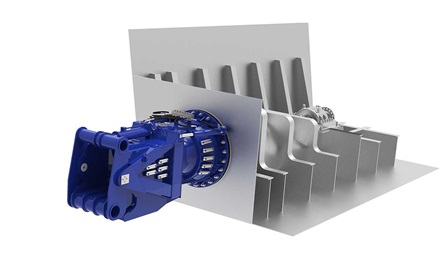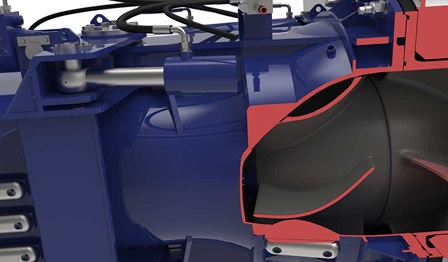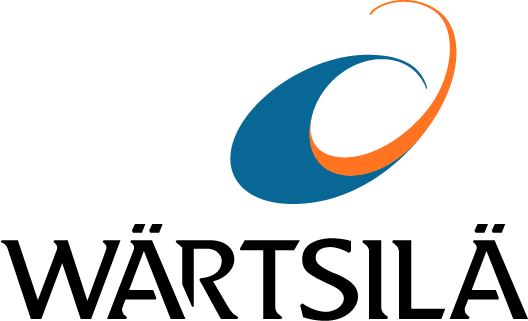
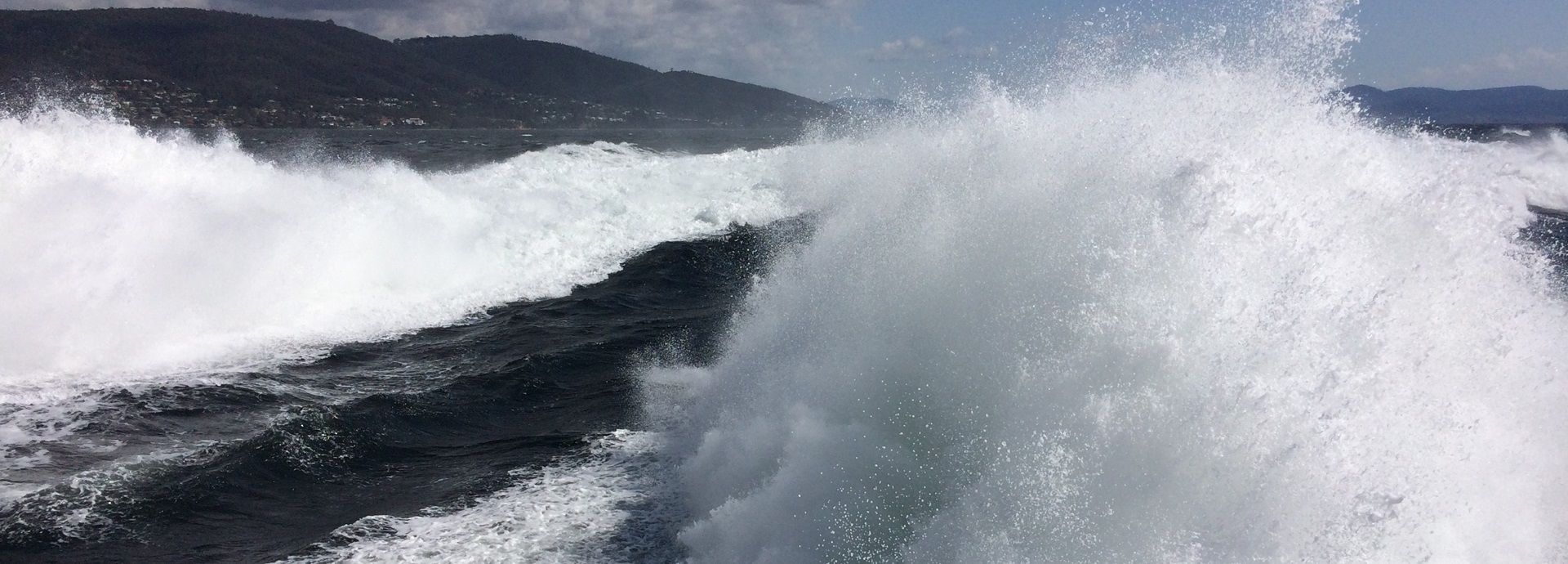
Waterjets and marine jet propulsion
When deciding on the right waterjet solution there are many variables to consider – from size, weight and power to efficiency, reliability, support and ease of integration. But this doesn’t mean that choosing a waterjet has to be a complicated process. With over four decades of experience in waterjet technology, Wärtsilä can help you identify the right solution for your application.
How does waterjet propulsion work?
A waterjet generates propulsive thrust by sucking water into a pump unit through an intake/inlet located on the bottom of the vessel, then forcing the water out through the impeller, propelling the vessel forward. As the water exits the impeller it is pushed through the steering unit, which is comprised of two main components: a steering nozzle for port and starboard movements, and a reversing bucket for forward and reverse movements. This method of steering makes waterjet-powered vessels highly manoeuvrable.
The benefits of waterjets
Waterjet-driven vessels can rotate on their own axis, manoeuvre easily from side to side and perform j-turn manoeuvres as well as crash stops, sometimes referred to as bucket stops. By using water as the source of power, several traditional propulsion ‘problems’ are solved. Waterjets can operate in shallow draft conditions and are more efficient at high speeds. Since there is no equipment below the vessel, waterjet-driven vessels are also safer for swimmers and marine life.
Waterjets vs. propellers
Waterjet propulsion is often chosen instead of conventional propellers for vessels that require high speeds with low noise and vibration. For speeds above 25 knots, waterjets can be more efficient than conventional propellers. Waterjet propulsion also offers the additional benefits of improved manoeuvrability at all speeds and a significant reduction in the ship’s draught.
Types of waterjets
Wärtsilä waterjet solutions are the result of consistent innovation and development over four decades. They offer high-quality construction and proven performance thanks to their axial-pump design. The axial-pump structure is lightweight, requires less space on the vessel’s transom and increases cavitation margins for better operational flexibility. In addition, the hydraulics can be installed inside the vessel, making them easier to maintain and repair.
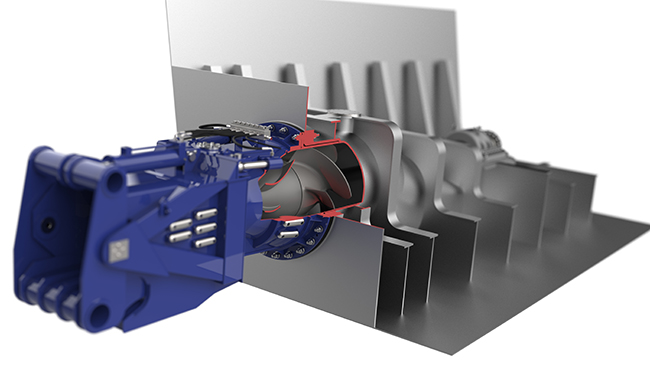
Modular waterjets
Wärtsilä modular waterjets are fully optimised according to your vessel type and power source, with a high level of customisation options available. Modular waterjets are constructed in 100% duplex stainless steel for outstanding durability.
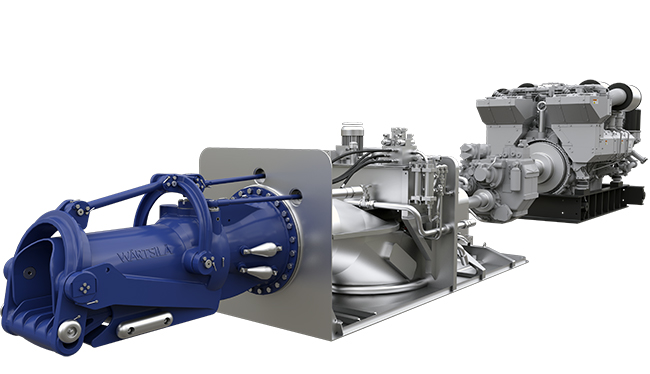
Midsize waterjets
Wärtsilä midsize waterjets are designed for 1,000–4,500 kW input powers and are delivered in five standard sizes with proven designs that offer shorter lead times and reduced costs. To reduce weight onboard, some parts are constructed from casted aluminium; critical components are constructed from high-grade stainless steel.
Applications of waterjets
Wärtsilä’s waterjets are known for their unbeatable efficiency and reliability, making them the propulsion method of choice for everything from navy and coastguard vessels, crew boats and high-speed passenger and RoPax ferries.
Waterjet-powered catamarans
Wärtsilä waterjets have powered Incat catamarans to three successive world records for the fastest Atlantic crossing as well as speeding the world’s largest zero-emissions catamaran ferry between Argentina and Uruguay. They have also helped Spanish ferry operator Baleària shape the future of high-speed, LNG gas-powered catamarans by powering two of their high-speed vessels.
Waterjet performance, technology and innovation
Wärtsilä’s state-of-the-art WXJ waterjets deliver high propulsion efficiency and outstanding performance. They feature the latest generation WXJ axial flow pump design that improves thrust by up to three percent compared to previous generation pumps, improving fuel economy and helping to reduce emissions.
Because the waterjet thrust bearing is not within the water flow inside the jet, there is no risk of oil leakage into the water. This makes them safer for the environment. Because the cavitation margins are larger, WXJ waterjets are also quieter. This is another way in which they are more environmentally friendly.
Wärtsilä WXJ waterjet series
Ever wanted to see how a waterjet works? Watch this animation featuring the Wärtsilä WXJ modular waterjet, with cutaways that pull you right into the heart of the action.
Installing lightweight, modular waterjets will reduce emissions
Wärtsilä’s modular WXJ waterjets lightweight and have high propulsion efficiency and an improved axial pump design that improves vessel fuel economy. They are a great way to reduce emissions. You will find 50 more ways in a fascinating eBook “51 great ways the maritime industry could cut its greenhouse gas emissions”. Learn more:
Customer stories
Discover the benefits others have already gained from Wärtsilä waterjets.


